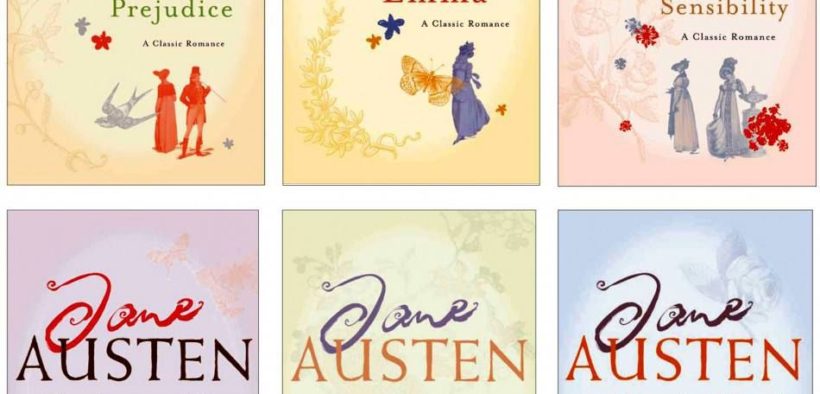Shallow love stories or something more? ..Find out here!

OUTLINE
1.Introduction-background of Victorian Literature and love stories
2.Common theme of love in Emma, Mill on the Floss and Tess
3.Common theme of love in Joseph Andrews, Wuthering Heights, and Great Expectations
4.Difference between the novels and conventional love stories
5.Element of shallowness and predictability
6.Conclusion-recapitalization of main points, final remarks
READ ABOUT Modern Novel HERE
Background of Victorian Literature
Victorian literature was known for its idealization of women, socio-economic class struggles, nostalgia and criticism of society. Classical novels that have at least one male protagonist and female protagonist are often deemed as love stories. This is because the platonic and (more often) romantic and sexual attraction between the two characters are often explored. Whether they are friends or enemies, the pull between the characters is existent and it is for this reason, many readers are quick to judge such novels as conventional love stories. Further onwards, we will discuss how these novels portray more than surface-level love, shallowness and predictability.
Common theme of love in female-centered novels
Love is a theme widely explored in female-centered novels such as Emma, Tess of the D’Urbervilles and The Mill on the Floss. Jane Austen’s novels are known for their (mostly) happy endings and marriage themes. Pride and Prejudice depicts the situation of the Bennet sisters and their marriage proposals. They have to marry well in order to support themselves financially as women had no right to property in those days.
Emma Woodhouse is also in a similar situation. She does not want to marry though and she tries setting up her peers based on a similar notion. Tess has to marry for many reasons. Her parents are poor and the family needs money to support themselves when their father falls off his horse. Tess, being the eldest, hopes to contribute to her family’s income by working for an alleged relative and later on a dairy farm. She falls in love with Angel Clare along the way and is coaxed into marriage.
The Mill on the Floss shows different types of love—platonic, passionate and romantic. Maggie engages with three male characters—her brother Tom, Philip and Stephen Guest. Although she never really marries Philip and Stephen, the mutual attraction is shown on many occasions.
Common theme of love in male-centered novels
However, that is not to say that male-centered novels portray love in a lesser light. Joseph Andrews, Great Expectations and Wuthering Heights all reflect the same notion as stated above. Joseph and Fanny’s chaste and legitimate love transcends seduction, attempted rapes, and infidelity. They don’t engage in any sexual encounter until they are married and the love they have for each other shows the extent to which they would each fight for each other.
Wuthering Heights is perhaps the most passionate novel of all, despite being centered on a male character. Heathcliff’s love for Catherine is so powerful and deep that it transcends death. He pleads with her ghost to haunt him for many years so that the two lovers may remain together. Also, Pip’s unrequited but passionate love for Estella continues for a long time, manifesting that it is true and deep.
Whether the novel is male-centered or female-centered, all the classic novels portrayed the power of passionate love despite obstacles and hurdles. However, one may argue that these stories are not shallow nor predictable. It is true that to a certain extent, these can be categorized as love stories but the word ‘conventional’ is debatable. This is because there are many differences between these classics and conventional love stories.
The Difference
Conventional love stories do not portray intensive character development. In today’s society, we believe in the notion of acceptance of all traits—whether good or bad. This means that if a person has a weakness or a flaw—for example alcohol addiction or gambling habits—the lover would still accept them and love them for who they are, despite their short-comings.
However, Pip and Estella’s characters are a strong rejection of this. Pip learns to become a gentleman to improve his position in society but mainly to win Estella’s heart and admiration. Although Estella is cruel and cold-hearted on the surface, it would not be wrong to say that her heart does melt when she notices Pip making a change to better himself for her.
Conventional love stories are predictable in the sense that happy endings are in abundance and the characters generally come to understand their feelings halfway through the novel. This is not true for Emma who continues to deceive herself time and again by insisting that she isn’t fit for marriage. The same happens to Tess who has to be coaxed into a marriage although she tries to fight her feelings for Angel many times. It is only when Angel wears her down by his persistence does she accept.
This is similar to Emma who finally realizes that she loves Mr. Knightly when Harriet confesses to liking him. Elizabeth and Mr. Darcy also encounter the same fate. Elizabeth realizes that her prejudices were wrong and that Mr. Darcy is a good, kind-hearted, and generous person while Mr. Darcy also learns to put his pride away and admire Elizabeth despite his earlier thinking that she would be unfit to be his wife.
The Difference Cont.
It is a universal truth that actions speak louder than words. The classics bear witness to the proverb and this ultimately makes them different from conventional love stories. Conventional love stories such as Disney movies or fairy tales show grand dialogues of love and confession. However, classical novels such as Wuthering Heights and Joseph Andrews show the power behind actions.
Catherine goes on to say that she and Heathcliff are soulmates and “his and mine are the same”, Heathcliff proves this time and again by getting revenge on Edgar and his children for Catherine’s death. As Heathcliff believes that Catherine would have remained alive if she had not opposed her heart and married Edgar, he persecutes Edgar, Linton and Cathy despite their (somewhat) innocence. His revenge is fueled by his love for Catherine.
Joseph also shows his love towards his fiancée, Fanny, by rejecting Lady Booby and Ms. Slipslop even when they threaten his job and he gets arrested for a small crime. He refuses to give up his chastity and marries Fanny only when their complications in their parentage and past are resolved.
But, wait! There’s MORE
Lastly, conventional love stories are shallow and do not affect the reader deeply. The best example to prove how deeply the classical novels depicted this would be from Wuthering Heights and The Mill on the Floss. Heathcliff opens the window of the house to let nature and consequently Catherine in and this leads to his death. Basically, Bronte wanted to illustrate how love is all-consuming and pervasive. Another instance is when Heathcliff notices that Cathy’s eyes look like Catherine’s and he refrains from striking her. Heathcliff would never have laid a finger on Catherine despite her mistake to marry Edgar. This shows how deeply affected Heathcliff was and how pervasive love was that he began to see Catherine in other people. Readers would have deeply felt the connection and been moved too.
Similarly, The Mill on the Floss shows the passionate, deep, and all-inclusive love Maggie has for her brother Tom. Due to his disapproval, she decides not to marry Philip nor Stephen and can’t hate him when he rejects her from entering his house. She is willing to sacrifice her life for her brother. She could have rowed away to safety rather than try to check on her brother in the flood. Perhaps, then maybe they would both be alive at the end. However, her burning fire and love to make sure her brother was alright caused both of their deaths.
These strong portrayals of love can rarely be seen in conventional love stories. The characters talk more and act less, which rarely impacts the reader.
What about real-life society?
All these portrayals of love are rarely seen in real-life society. On the other hand, conventional love stories are widely reflected in society. As citizens, we have seen many proclamations of love. Men telling girls that they worship the land they walk on and that they would never be disloyal to them. However, in the face of hardships, they forget their confessions. The same is the case with girls. They tell guys that they love them and will be loyal. However, they are no better. These girls, when they find a better guy (good-looking, rich, and other superior qualities), they run after him. In Pakistani society, such behaviors are criticized and looked down upon by community elders. Of course, these incidents still take place but undetected or in secret.
Conclusion
Conclusively, classical novels with romantic subplots are more than just conventional love stories. They possess intensive and complicated character developments, minute but deep and pervasive gestures and portrayals of affection, affecting the readers to think critically, and hardly predictable. Examples include Joseph Andrews (1742), Emma (1815), Wuthering Heights (1847), Great Expectations (1860), Mill on the Floss (1860), Tess of the D’Urbervilles (1891). Therefore, novels also carry serious and intense expressions of ideas, thoughts, and emotions. These novels are not to be confused with conventional love stories that are predictable and shallow.
Currently, I am a student of Fatima Jinnah Women University. With a burning passion for psychology, words, and dreams, I decided to abandon medical studies for humanities. These days, when I’m not listening to ballads, watching movies, or sitting down with a good novel, I am rigorously studying Hangul (Korean language) to satisfy my obsession for BTS and K dramas. I’m a thinking introvert and INFJ personality. Therefore, I like ‘me time’. My articles typically resonate with psychological well-being advice.










